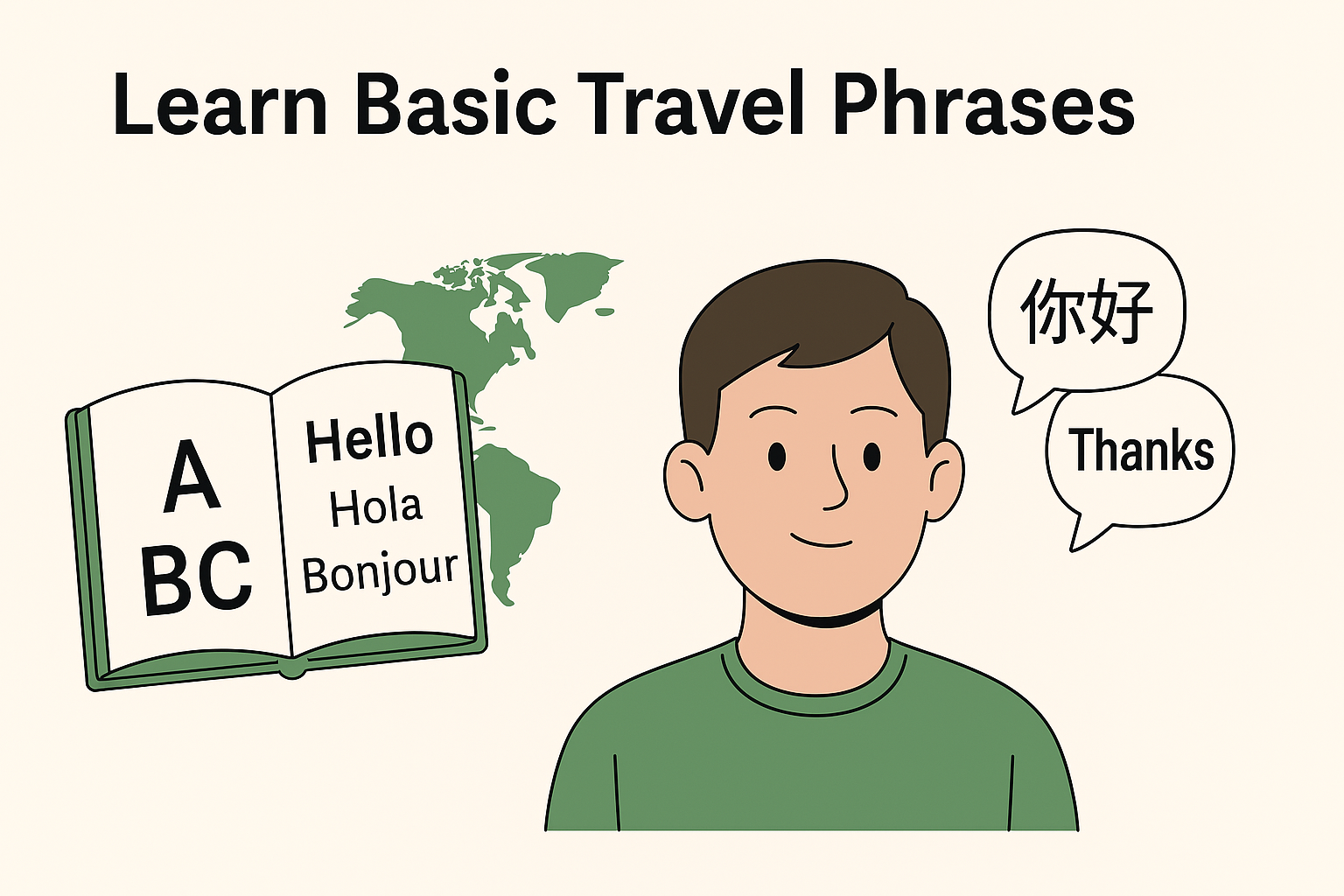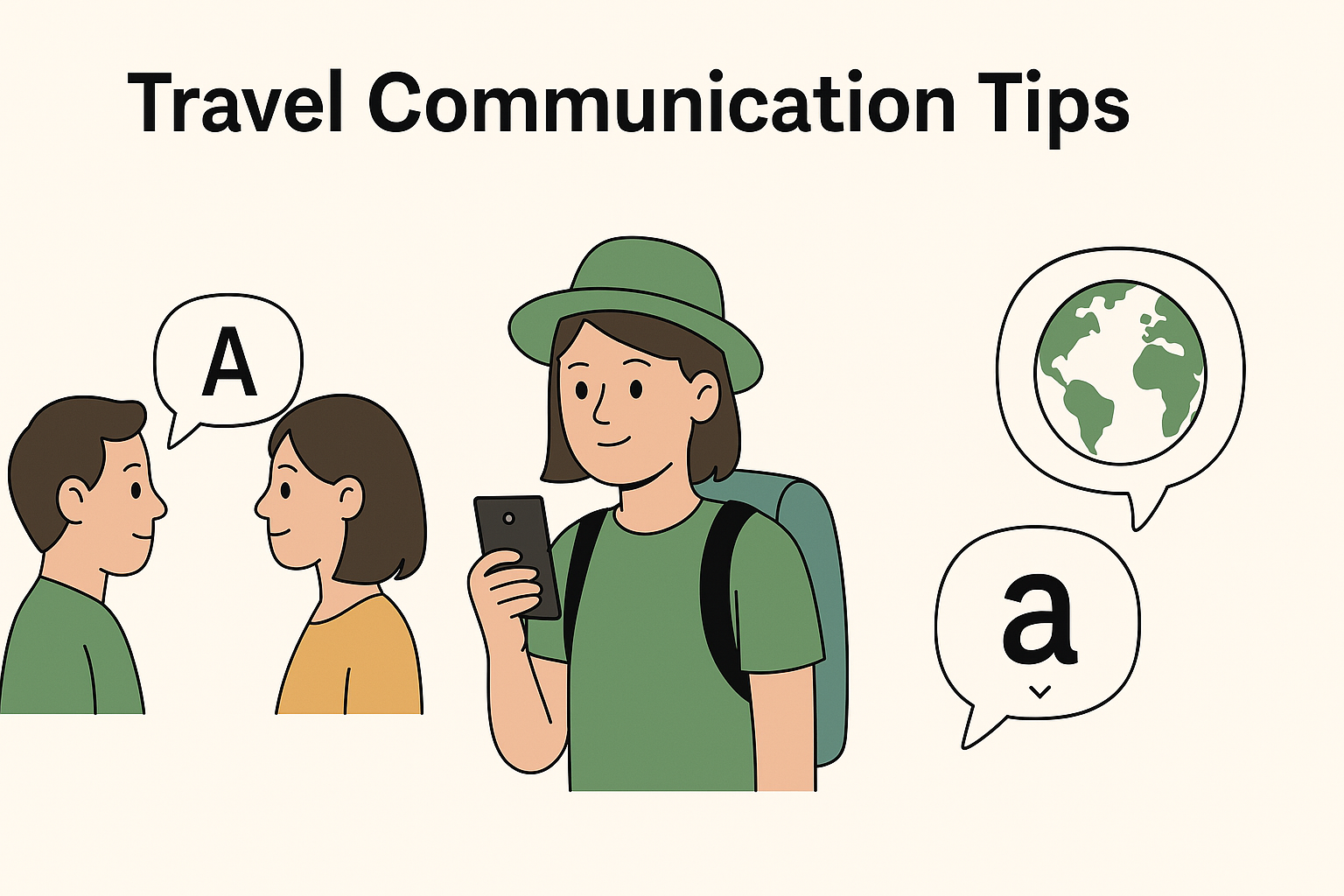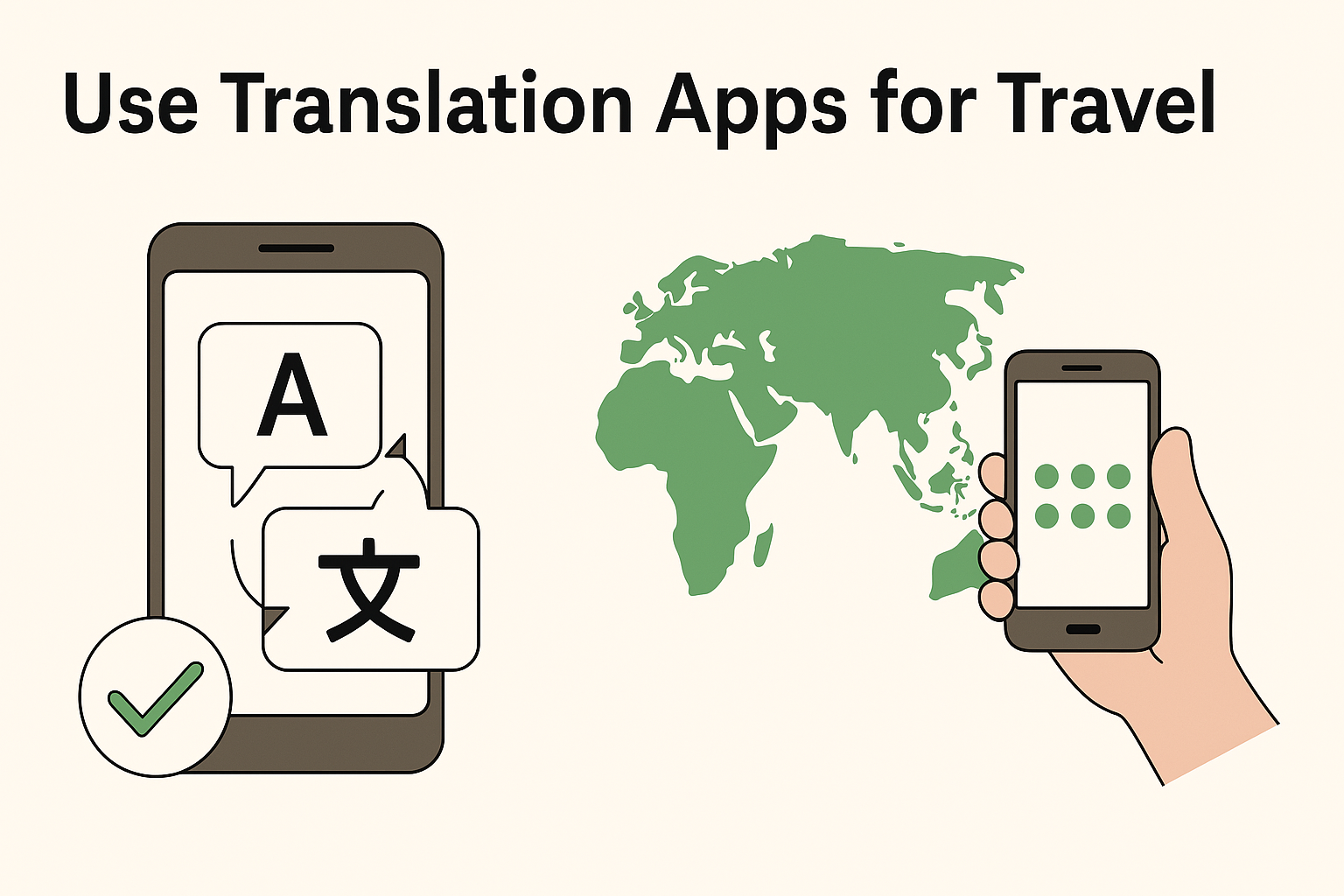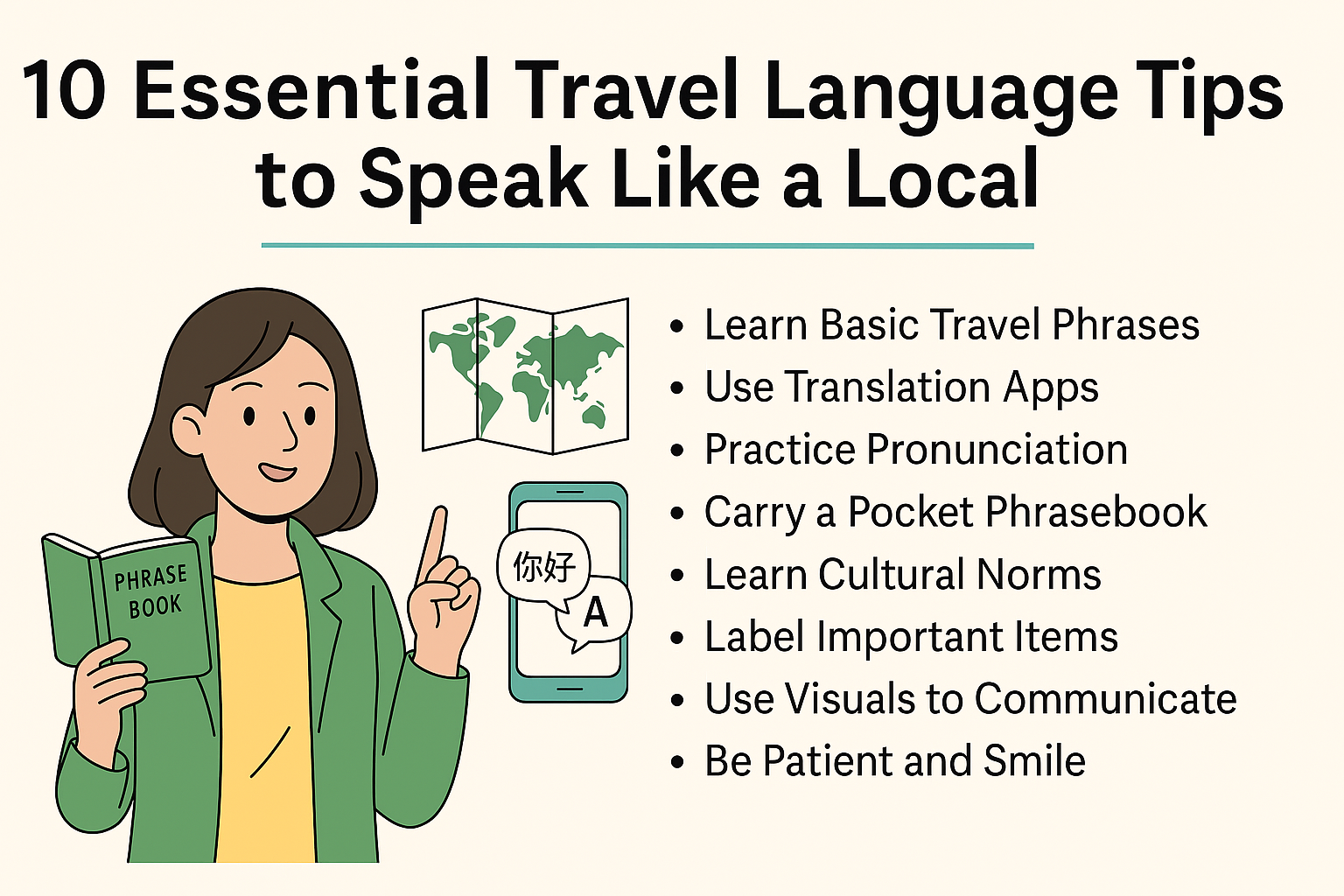10 Essential Travel Language Tips to Speak Like a Local: A Complete Guide for Travelers Navigating Foreign Languages
Introduction
Traveling is about experiencing new cultures, tasting new cuisines, and exploring places you’ve never seen. However, one common challenge that most travelers face is the language barrier. Whether you’re in Europe, Asia, or South America, knowing how to communicate in a foreign language can make your trip much smoother.
This comprehensive guide offers 10 essential travel language tips to speak like a local. These practical and easy-to-follow suggestions will help you communicate while traveling, connect with locals, and feel more confident navigating foreign lands. Throughout this article, we’ll use important SEO keywords like travel language tips, language tips for travelers, translation apps for travel, and more—so you’re equipped with the right knowledge to plan your next adventure.
Learn Basic Travel Phrases Before You Go
Why Basic Phrases Matter
Before you even board your flight, it’s wise to study some basic travel phrases in the language spoken at your destination. These phrases will help you in everyday situations like greeting someone, ordering food, or asking for directions. Knowing how to say “hello,” “thank you,” or “where is the bathroom?” can go a long way toward building a friendly rapport with locals.

Tools for Learning Basic Travel Phrases
-
Apps like Duolingo, Babbel, and Memrise
-
Phrasebooks or printable cheat sheets
-
YouTube videos for pronunciation
Even if you only memorize 20–30 phrases, you’ll dramatically improve your travel experience. This is one of the most powerful language tips for travelers looking to make a positive impression abroad.
Use the Best Travel Translation Apps
Your Digital Travel Companion
When words fail, technology can step in. Translation apps for travel are an essential part of any modern traveler’s toolkit. These tools can instantly translate menus, signs, conversations, and even photos of text in real-time.
Top Translation Apps for Travel:
-
Google Translate – Offers offline translation and camera scanning.
-
iTranslate – Supports text, voice, and website translation.
-
SayHi – Allows you to hold real-time conversations with people speaking another language.
-
Papago – Great for Asian languages like Korean, Japanese, and Chinese.
Make sure to download the offline version of your chosen language before your trip. These language tools for travelers are crucial for navigating unfamiliar situations and overcoming language barriers abroad.
Practice How to Communicate While Traveling
Prepare for Real-World Scenarios
Many people learn vocabulary but freeze when it’s time to talk. To truly communicate while traveling, you need to rehearse real conversations. Imagine yourself ordering coffee, checking into a hotel, or asking for directions at a train station.

Practice Techniques:
-
Use flashcards with commonly used phrases.
-
Record your voice to improve pronunciation.
-
Watch travel vlogs or movies in the local language.
-
Engage in language exchanges using HelloTalk or Tandem.
This tip builds confidence and reduces hesitation. It’s one of the most practical travel communication tips for both beginner and seasoned travelers.
Create and Carry a Personal Language Cheat Sheet
Your Emergency Language Toolkit
Imagine your phone battery dies or you’re in a remote village with no internet access. What then? That’s when your language cheat sheet becomes a lifesaver. It’s a printed or written sheet of critical phrases and emergency information.
What to Include:
-
Basic travel phrases (greetings, questions, common responses)
-
Hotel name and address in the local language
-
Emergency phrases like “I need help” or “Call a doctor”
-
Local transportation keywords (bus, train, taxi)
-
Food allergy alerts
This cheat sheet works as a quick reference guide and gives you confidence. It’s a key language tool for travelers, especially when traveling off the beaten path.
Speak the Local Language When Traveling – Don’t Be Shy
Effort Is More Valuable Than Perfection
Many travelers hesitate to speak the local language for fear of making mistakes. But most locals appreciate any effort you make to communicate in their tongue. Even if your grammar is off, your attempt to speak the local language when traveling shows respect and a willingness to learn.

Tips to Speak with Confidence:
-
Practice daily: say phrases out loud each morning.
-
Start with greetings and short questions.
-
Use tone and body language to support what you’re saying.
-
Don’t worry about perfection—focus on connection.
This approach opens doors and deepens your travel experience. It’s among the most genuine language tips for travelers who want to engage with locals meaningfully.
Use Visual Aids and Gestures
When Words Fail, Images Work
In many situations, non-verbal communication can bridge gaps that words cannot. Using visuals, gestures, and body language is one of the oldest and most effective travel communication tips.
How to Use Visual Communication:
-
Carry a photo book or app with pictures of items (e.g., food, hotel, hospital).
-
Use maps to point out destinations.
-
Draw simple sketches to convey ideas.
-
Learn universal hand gestures (thumbs up, pointing, nodding).
This method is especially useful in rural areas or with older people who may not be familiar with modern apps. Visual communication helps you overcome language barriers abroad in a way that feels natural and intuitive.
Save Important Information in Your Phone
Your Digital Safety Net
Smartphones are a traveler’s best friend. Beyond entertainment and maps, they’re also a great place to store key phrases, emergency contacts, and location information—all of which can help when communicating while traveling.
Must-Have Notes on Your Phone:
-
Key phrases in the local language
-
Hotel names and addresses
-
Screenshots of public transport schedules
-
Emergency contacts and embassy info
-
Translations for medical needs or food allergies
By organizing these essentials, you’re always prepared, even if you can’t find someone who speaks English. It’s one of the smartest language tools for travelers who prefer digital over paper.
Speak Slowly and Use Simple Words
Slow Down to Be Understood
When interacting with non-native speakers, it’s important to speak clearly, use basic vocabulary, and avoid idioms or slang. This greatly increases the chances that the other person will understand you—even if they speak limited English.
How to Simplify Speech:
-
Break long sentences into short parts.
-
Use common nouns and action words.
-
Avoid complex grammar and contractions.
-
Replace idioms like “hit the road” with “leave.”
This is one of the easiest yet most overlooked language tips for travelers that can instantly make conversations smoother.
Observe and Mimic Locals
Imitation Leads to Learning
One of the fastest ways to pick up a language is by watching and listening to how locals speak. Their body language, intonation, and commonly used phrases are often the most practical tools to help you speak the local language when traveling.
What to Observe:
-
Common greetings and phrases in shops or restaurants
-
How people ask for directions
-
Phrases used in public transportation or marketplaces
-
Local idioms or slang that aren’t in phrasebooks
This tip offers an organic way to learn and is a valuable addition to your list of travel language tips. It’s also free—just pay attention and mimic what you hear.
Review and Practice Daily While Traveling
Repetition Builds Confidence
Even after you’ve arrived at your destination, the learning doesn’t stop. Use spare moments in your hotel, while on a train, or during meals to review what you’ve learned. This daily repetition helps cement new vocabulary and improves your ability to communicate while traveling.
How to Practice Daily:
-
Use flashcards while waiting in lines.
-
Write a mini-journal of your day in the local language.
-
Listen to local radio or music with subtitles.
-
Repeat new phrases you heard throughout the day.
Consistent practice not only helps you remember phrases but makes you more confident in spontaneous interactions. Among all language tips for travelers, daily review is the most effective for long-term retention.
Conclusion
Learning how to communicate while traveling is about more than just learning new words—it’s about connection, understanding, and respect. Whether you’re using translation apps for travel, practicing basic travel phrases, or simply smiling and pointing, every effort brings you closer to authentic experiences.
With these 10 essential travel language tips to speak like a local, you’ll navigate foreign lands more confidently, build relationships more naturally, and make memories more meaningfully. Embrace the journey, and let language be your bridge—not your barrier.
FAQs: Travel Language Tips
1. What are the best travel language tips for beginners?
Ans. Start with basic travel phrases, use translation apps for travel, and carry a cheat sheet. Practice pronunciation and keep your phrases short and simple.
2. How can I overcome a language barrier abroad?
Ans. Use a combination of visual aids, translation apps, and gesture-based communication. Also, observe local behavior and mimic their communication styles.
3. What are the best translation apps for travel?
Ans. Top choices include Google Translate, iTranslate, SayHi, and Papago. They offer voice, photo, and text translation to help you communicate in real time.
4. Should I learn a new language before traveling?
Ans. While fluency isn’t necessary, knowing basic travel phrases and attempting to speak the local language when traveling enhances your experience and helps you build trust with locals.
5. How can I improve communication while traveling without speaking the language?
Ans. Use language tools for travelers like phrasebooks, translation apps, cheat sheets, and slow, clear speech. Don’t underestimate the power of a smile and patience.













